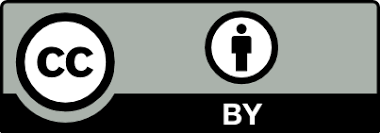Environmental pollutants notifications in Rapid Alert System for Food and Feed
Abstract
Keywords
Environmental pollutants Food safety Rapid Alert System for Food and Feed (RASFF) RASFF notifications
References
- Abdel-Shafy, H.I., Mansour, M.S. (2016). A review on polycyclic aromatic hydrocarbons: Source, environmental impact, effect on human health and remediation. Egyptian Journal of Petroleum, 25(1), 107-123. https://doi.org/10.1016/j.ejpe.2015.03.011
- Alshannaq, A., Yu, J.H. (2021). Analysis of EU Rapid Alert System (RASFF) notifications for aflatoxins in exported US Food and Feed Products for 2010–2019. Toxins, 13(2), 90-102. https://doi.org/10.3390/toxins13020090
- Beia, S. I., Bran, M., Petrescu, I., Beia, V. E., Dinu, M. (2020). Food fraud incidents: Findings from the latest rapid alert system for food and feed (RASFF) report. Scientific Papers Series Management, Economic Engineering in Agriculture and Rural Development, 20(2), 45-52.
- Bouzembrak, Y., Marvin, H.J. (2016). Prediction of food fraud type using data from Rapid Alert System for Food and Feed (RASFF) and Bayesian network modelling. Food Control, 61, 180-187. https://doi.org/10.1016/j.foodcont.2015.09.026
- Caldeira, A.J.R., Alves, C.P.P., Santos, M.J. (2021). Anisakis notification in fish: an assessment of the cases reported in the European Union Rapid Alert System for Food and Feed (RASFF) database. Food Control, 124, 107913. https://doi.org/10.1016/j.foodcont.2021.107913
- Çınar, S., Yılmaz, S.N., Aydın, E., Yorulmaz, A. (2017). Gıda ve Yem için Hızlı Alarm Sistemi (RASFF) 2009-2016 Türkiye raporu. Türk Tarım-Gıda Bilim ve Teknoloji Dergisi, 5(8), 873-882. https://doi.org/10.24925/turjaf.v5i8.873-882.1155
- Dada, A.C., Somorin, Y.M., Ateba, C.N., Onyeaka, H., Anyogu, A., Kasan, N.A., Odeyemi, O.A. (2021). Microbiological hazards associated with food products imported from the Asia-Pacific region based on analysis of the rapid alert system for food and feed (RASFF) notifications. Food Control, 129, 108243. https://doi.org/10.1016/j.foodcont.2021.108243
- Deniz Şirinyıldız, D., Yorulmaz, A. (2019). Gıda ve Yem için Hızlı Alarm Sistemi’nde yer alan kuru incir kaynaklı bildirimler. HASAT Uluslararası Tarım ve Orman Kongresi, 21-23 Haziran 2019, Ankara.
- Djekic, I., Jankovic, D., Rajkovic, A. (2017). Analysis of foreign bodies present in European food using data from Rapid Alert System for Food and Feed (RASFF). Food Control, 79, 143-149. https://doi.org/10.1016/j.foodcont.2017.03.047
- Fürst, P., Milana, M.R., Pfaff, K., Tlustos, C., Vleminckx, C., Arcella, D., Barthélémy, E., Colombo, Goumperis, T., Pasinato, L., Torres, R.R., Afonso, A. (2019). Risk evaluation of chemical contaminants in food in the context of RASFF notifications: Rapid Assessment of Contaminant Exposure tool (RACE), EFSA Supporting Publications, 16(5), 1625E. https://doi.org/10.2903/sp.efsa.2019.EN-1625
- Gupta, P.K. (2007). Methods in environmental analysis: water, soil and air. p. 5-127. https://content.kopykitab.com/ebooks/2016/05/7066/sample/sample_7066.pdf (erişim 27.07.2021)
- Hoffman, E.C., Reyes, H., Chu, F. F., Sander, F., Conley, L. H., Brooks, B.A., Hankinson, O. (1991). Cloning of a factor required for activity of the Ah (dioxin) receptor. Science, 252(5008), 954-958. https://doi.org/10.1126/science.1852076
- Karabal, A. 2019. Gıda mevzuatı ve gıda güvenliği. International Journal of Social and Humanities Sciences, 3(1), 179-198.
- Kürekci, C., Şahin, S. (2019). Kanatlı eti ve ürünleri hakkında RASFF sistemine yapılan bildirimlerin gıda güvenliği yönünden değerlendirilmesi. 5. Uluslararası Beyaz Et Kongresi, 24-28 Nisan 2019, Antalya.
- Lüth, S., Boone, I., Kleta, S., Al Dahouk, S. (2019). Analysis of RASFF notifications on food products contaminated with Listeria monocytogenes reveals options for improvement in the rapid alert system for food and feed. Food Control, 96, 479-487. https://doi.org/10.1016/j.foodcont.2018.09.033
- Pádua, I., Moreira, A., Moreira, P., de Vasconcelos, F.M., Barros, R. (2019). Impact of the regulation (EU) 1169/2011: Allergen-related recalls in the rapid alert system for food and feed (RASFF) portal. Food Control, 98, 389-398. https://doi.org/10.1016/j.foodcont.2018.11.051
- Pigłowski, M. (2019). Comparative analysis of notifications regarding mycotoxins in the Rapid Alert System for Food and Feed (RASFF). Quality Assurance and Safety of Crops & Foods, 11(8), 725-735. https://doi.org/10.3920/QAS2018.1398
- Postolache, A.N., Chelmu, S.S., Ariton, A.M., Mitica, C., Pop, C., Ciobanu, M.M., Șteofil, C. (2020). Analysis of RASFF notifications on contaminated dairy products from the last two decades: 2000-2020. Romanian Biotechnological Letters, 25(2), 1396-1406. https://doi.org/10.25083/rbl/25.2/1396.1406 .
- RASFF (2021). Rapid Alert System for Food and Feed (RASFF). https://ec.europa.eu/food/safety/rasff-food-and-feed-safety-alerts_en (erişim 27.07.2021).
- Sağlam, A., Masatcıoğlu, M.T. (2020). Avrupa Birliği ve Türkiye kaynaklı gıdalarda 2009-2018 yılları arasında RASFF bildirimleri. Gıda, 45(4), 623-634. https://doi.org/10.15237/gida.GD20051
- Suzuki, T., Hidaka, T., Kumagai, Y., Yamamoto, M. (2020). Environmental pollutants and the immune response. Nature Immunology, 21, 1486-1495. https://doi.org/10.1038/s41590-020-0802-6
- Tarım ve Köyişleri Bakanlığı. (2008). Gıda güvenliği ve kalitesinin denetimi ve kontrolüne dair yönetmelik. https://www.resmigazete.gov.tr/eskiler/2008/09 (erişim27.07.2021).
- Yılmaz Çebi, S., Olhan, E. (2017). Avrupa Birliği Gıda ve Yemde Hızlı Alarm Sistemi’nin Türkiye’nin gıda ürünleri ihracatı üzerine etkilerinin değerlendirilmesi. Turkish Journal of Agricultural Economics, 23(1), 133-144. https://doi.org/10.24181/tarekoder.325641
Gıda ve Yem için Hızlı Alarm Sistemi’nde yer alan çevresel kirletici bildirimleri
Abstract
Gıda ve Yem için Hızlı Alarm Sistemi; Avrupa Komisyonu tarafından oluşturulmuş, gıda zincirinde halk sağlığına yönelik riskler tespit edildiğinde hızlı şekilde bilgi akışını ve tepki verilmesini sağlayan bir veri tabanıdır. Bu çalışma kapsamında, 2000-2020 yılları arasında Hızlı Alarm Sistemi veri tabanında yer alan gıdalarda bulunan çevresel kirletici kaynaklı bildirimler ile ilgili ayrıntılı bir rapor hazırlanmıştır. Sistemden elde edilen tüm veriler Microsoft Office Excel 2010 kullanılarak değerlendirilmiştir. Yirmi bir yıl içerisinde gerçekleştirilmiş 774 bildirim incelendiğinde, bildirimlerin %32’sinin “balık ve balık ürünleri”, %29’unun “sıvı ve katı yağlar” ve %11’inin “diyetetik ürünler ve gıda takviyeleri” hakkında oluşturulduğu belirlenmiştir. Temel problemin (bildirimlerin %12’si) “polisiklik aromatik hidrokarbonlar” olduğu saptanmıştır. Tüm bildirimler içinde %33’ünün “ciddi risk” derecesine sahip olduğu bulunmuştur. En fazla bildirim (81 bildirim) 2001 yılında bulunmaktadır. Ek olarak, bildirimlerin %61’i “alarm”, %13’ü “bilgi”, %11’i “dikkat gerektiren bilgi”, %11’i “sınır iadesi” ve %4’ü “takip gerektiren bilgi” bildirimleri türündedir. Bildirimlerin büyük bir kısmı (415 bildirim) piyasadaki resmi kontroller sonucunda oluşturulmuştur. Almanya, 178 bildirim ile en yüksek bildirimde bulunan ülkedir. Bildirimler sonucunda genellikle “ürünlerin piyasadan toplatılması” ve “üretici firmanın ürünleri piyasadan geri çekmesi” yaptırımları uygulanmıştır.
Keywords
Çevresel kirleticiler Gıda güvenliği Hızlı Alarm Sistemi Rapid Alert System for Food and Feed (RASFF) RASFF bildirimleri
Thanks
Derya DENİZ ŞİRİNYILDIZ 100/2000 YÖK Doktora Bursu programı kapsamında desteklenmiştir.
References
- Abdel-Shafy, H.I., Mansour, M.S. (2016). A review on polycyclic aromatic hydrocarbons: Source, environmental impact, effect on human health and remediation. Egyptian Journal of Petroleum, 25(1), 107-123. https://doi.org/10.1016/j.ejpe.2015.03.011
- Alshannaq, A., Yu, J.H. (2021). Analysis of EU Rapid Alert System (RASFF) notifications for aflatoxins in exported US Food and Feed Products for 2010–2019. Toxins, 13(2), 90-102. https://doi.org/10.3390/toxins13020090
- Beia, S. I., Bran, M., Petrescu, I., Beia, V. E., Dinu, M. (2020). Food fraud incidents: Findings from the latest rapid alert system for food and feed (RASFF) report. Scientific Papers Series Management, Economic Engineering in Agriculture and Rural Development, 20(2), 45-52.
- Bouzembrak, Y., Marvin, H.J. (2016). Prediction of food fraud type using data from Rapid Alert System for Food and Feed (RASFF) and Bayesian network modelling. Food Control, 61, 180-187. https://doi.org/10.1016/j.foodcont.2015.09.026
- Caldeira, A.J.R., Alves, C.P.P., Santos, M.J. (2021). Anisakis notification in fish: an assessment of the cases reported in the European Union Rapid Alert System for Food and Feed (RASFF) database. Food Control, 124, 107913. https://doi.org/10.1016/j.foodcont.2021.107913
- Çınar, S., Yılmaz, S.N., Aydın, E., Yorulmaz, A. (2017). Gıda ve Yem için Hızlı Alarm Sistemi (RASFF) 2009-2016 Türkiye raporu. Türk Tarım-Gıda Bilim ve Teknoloji Dergisi, 5(8), 873-882. https://doi.org/10.24925/turjaf.v5i8.873-882.1155
- Dada, A.C., Somorin, Y.M., Ateba, C.N., Onyeaka, H., Anyogu, A., Kasan, N.A., Odeyemi, O.A. (2021). Microbiological hazards associated with food products imported from the Asia-Pacific region based on analysis of the rapid alert system for food and feed (RASFF) notifications. Food Control, 129, 108243. https://doi.org/10.1016/j.foodcont.2021.108243
- Deniz Şirinyıldız, D., Yorulmaz, A. (2019). Gıda ve Yem için Hızlı Alarm Sistemi’nde yer alan kuru incir kaynaklı bildirimler. HASAT Uluslararası Tarım ve Orman Kongresi, 21-23 Haziran 2019, Ankara.
- Djekic, I., Jankovic, D., Rajkovic, A. (2017). Analysis of foreign bodies present in European food using data from Rapid Alert System for Food and Feed (RASFF). Food Control, 79, 143-149. https://doi.org/10.1016/j.foodcont.2017.03.047
- Fürst, P., Milana, M.R., Pfaff, K., Tlustos, C., Vleminckx, C., Arcella, D., Barthélémy, E., Colombo, Goumperis, T., Pasinato, L., Torres, R.R., Afonso, A. (2019). Risk evaluation of chemical contaminants in food in the context of RASFF notifications: Rapid Assessment of Contaminant Exposure tool (RACE), EFSA Supporting Publications, 16(5), 1625E. https://doi.org/10.2903/sp.efsa.2019.EN-1625
- Gupta, P.K. (2007). Methods in environmental analysis: water, soil and air. p. 5-127. https://content.kopykitab.com/ebooks/2016/05/7066/sample/sample_7066.pdf (erişim 27.07.2021)
- Hoffman, E.C., Reyes, H., Chu, F. F., Sander, F., Conley, L. H., Brooks, B.A., Hankinson, O. (1991). Cloning of a factor required for activity of the Ah (dioxin) receptor. Science, 252(5008), 954-958. https://doi.org/10.1126/science.1852076
- Karabal, A. 2019. Gıda mevzuatı ve gıda güvenliği. International Journal of Social and Humanities Sciences, 3(1), 179-198.
- Kürekci, C., Şahin, S. (2019). Kanatlı eti ve ürünleri hakkında RASFF sistemine yapılan bildirimlerin gıda güvenliği yönünden değerlendirilmesi. 5. Uluslararası Beyaz Et Kongresi, 24-28 Nisan 2019, Antalya.
- Lüth, S., Boone, I., Kleta, S., Al Dahouk, S. (2019). Analysis of RASFF notifications on food products contaminated with Listeria monocytogenes reveals options for improvement in the rapid alert system for food and feed. Food Control, 96, 479-487. https://doi.org/10.1016/j.foodcont.2018.09.033
- Pádua, I., Moreira, A., Moreira, P., de Vasconcelos, F.M., Barros, R. (2019). Impact of the regulation (EU) 1169/2011: Allergen-related recalls in the rapid alert system for food and feed (RASFF) portal. Food Control, 98, 389-398. https://doi.org/10.1016/j.foodcont.2018.11.051
- Pigłowski, M. (2019). Comparative analysis of notifications regarding mycotoxins in the Rapid Alert System for Food and Feed (RASFF). Quality Assurance and Safety of Crops & Foods, 11(8), 725-735. https://doi.org/10.3920/QAS2018.1398
- Postolache, A.N., Chelmu, S.S., Ariton, A.M., Mitica, C., Pop, C., Ciobanu, M.M., Șteofil, C. (2020). Analysis of RASFF notifications on contaminated dairy products from the last two decades: 2000-2020. Romanian Biotechnological Letters, 25(2), 1396-1406. https://doi.org/10.25083/rbl/25.2/1396.1406 .
- RASFF (2021). Rapid Alert System for Food and Feed (RASFF). https://ec.europa.eu/food/safety/rasff-food-and-feed-safety-alerts_en (erişim 27.07.2021).
- Sağlam, A., Masatcıoğlu, M.T. (2020). Avrupa Birliği ve Türkiye kaynaklı gıdalarda 2009-2018 yılları arasında RASFF bildirimleri. Gıda, 45(4), 623-634. https://doi.org/10.15237/gida.GD20051
- Suzuki, T., Hidaka, T., Kumagai, Y., Yamamoto, M. (2020). Environmental pollutants and the immune response. Nature Immunology, 21, 1486-1495. https://doi.org/10.1038/s41590-020-0802-6
- Tarım ve Köyişleri Bakanlığı. (2008). Gıda güvenliği ve kalitesinin denetimi ve kontrolüne dair yönetmelik. https://www.resmigazete.gov.tr/eskiler/2008/09 (erişim27.07.2021).
- Yılmaz Çebi, S., Olhan, E. (2017). Avrupa Birliği Gıda ve Yemde Hızlı Alarm Sistemi’nin Türkiye’nin gıda ürünleri ihracatı üzerine etkilerinin değerlendirilmesi. Turkish Journal of Agricultural Economics, 23(1), 133-144. https://doi.org/10.24181/tarekoder.325641
Details
| Primary Language | Turkish |
|---|---|
| Subjects | Food Engineering |
| Journal Section | Research Articles |
| Authors | |
| Publication Date | April 1, 2022 |
| Submission Date | August 4, 2021 |
| Published in Issue | Year 2022 Volume: 8 Issue: 2 |
Journal is licensed under a
CreativeCommons Attribtion-ShareAlike 4.0 International Licence 


Diamond Open Access refers to a scholarly publication model in which journals and platforms do not charge fees to either authors or readers.
Open Access Statement:
This is an open access journal which means that all content is freely available without charge to the user or his/her institution. Users are allowed to read, download, copy, distribute, print, search, or link to the full texts of the articles, or use them for any other lawful purpose, without asking prior permission from the publisher or the author. This is in accordance with the BOAI definition of open access.
Archiving Policy:
Archiving is done according to ULAKBİM "DergiPark" publication policy (LOCKSS).

